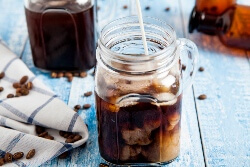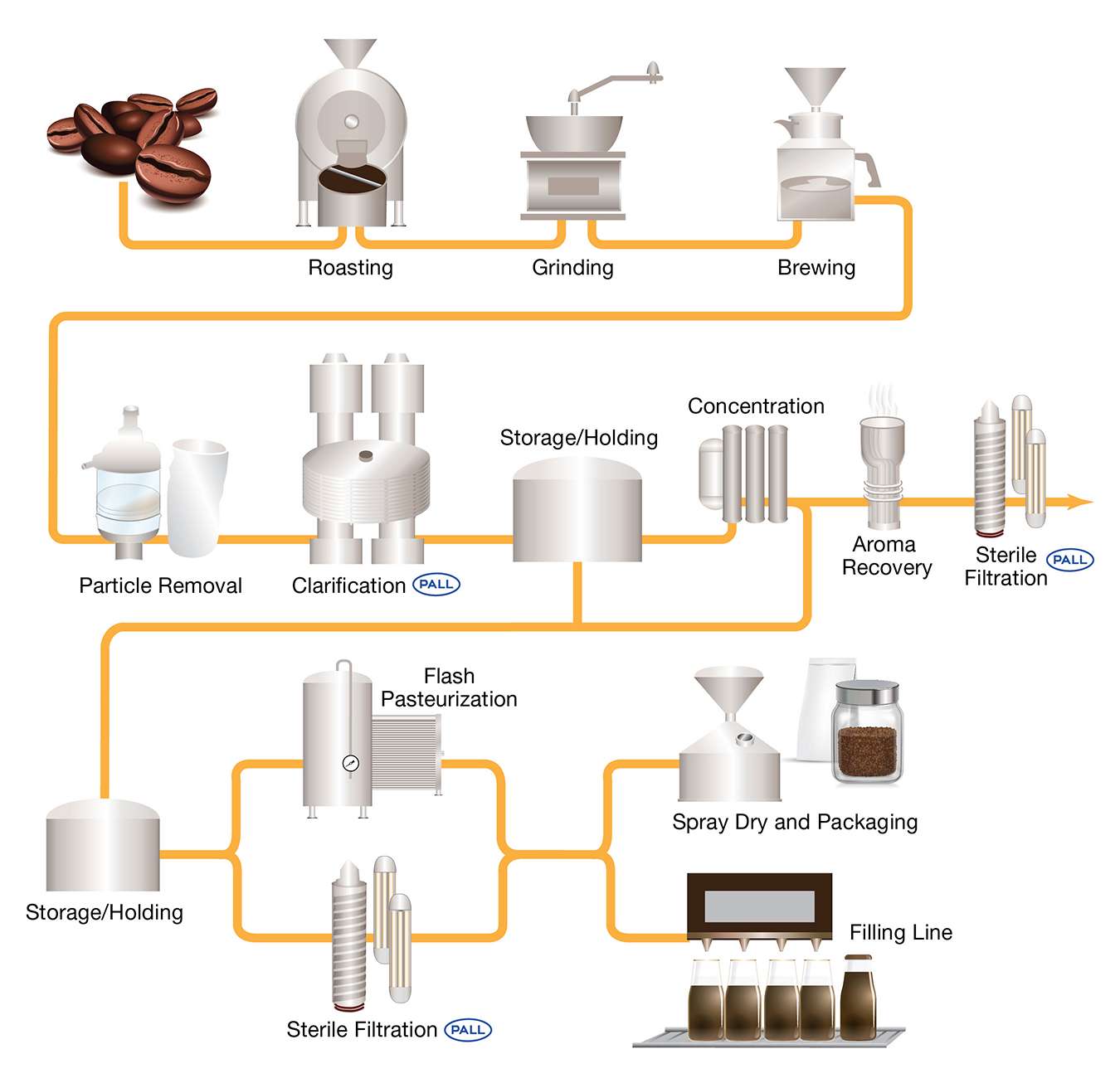Reduza o risco de contaminação por Clostridium Botulinum
Nos último anos, o consumo de café gelado explodiu. O mercado subiu para 21% em 2017, dentre as bebidas de café consumidas diariamente nos EUA, de 15% em 2015, de acordo com os dados da Associação Nacional do Café com sede em Nova Iorque.
Com a crescente conscientização dos consumidores e o desejo de consumir bebidas RTD refrescantes, espera-se que essa tendência continue. O café gelado oferece aos consumidores um substituto mais sutil e mais doce ao café quente. As bebidas RTD são produzidas usando água fria, o que resulta em uma extração menor de óleos com um sabor mais adocicado. Entretanto, como desvantagem, o custo de produção do café gelado, incluindo os processos de filtração do café gelado, é significativamente mais alto do que o do café tradicional, uma vez que a produção exige mais do que o dobro do volume de grãos de café.
Garantindo a segurança na produção de café Cold Brew
Com o aumento do consumo e maior distribuição, a atenção à qualidade e à segurança do produto também está aumentando. Como um alimento de baixa acidez, com pH normalmente superior a 4,6 e uma atividade de água maior que 0,852, sem processamento adequado, o extrato de café gelado embalado pode ser possivelmente um hospedeiro para fungos e microorganismos prejudiciais, como Clostridium botulinum . Apesar de os esporos da Clostridium botulinum geralmente serem inofensivos, o perigo ocorre quando a bactéria vegetativa C. botulinum produz neurotoxinas. O risco aumenta substancialmente em indivíduos imunocomprometidos.
Atendendo às diretrizes da FDA para processamento de café gelado
Agências reguladoras como a Food and Drug Administration (FDA) dos EUA agora estão definindo normas mais rígidas para alimentos com baixo teor de acidez, como medida preventiva. Por exemplo, todos os processadores comerciais de alimentos acidificados e com baixo teor de acidez situados nos EUA e todos os processadores em outros países que exportam alimentos enlatados com baixo teor de acidez ou produtos alimentares acidificados para os EUA precisam registrar suas fábricas de processamento na FDA.
Além disso, a orientação da FDA agora recomenda que as empresas sujeitas às disposições de redução de patógenos do regulamento sobre Análise de Perigos e Pontos Críticos de Controle (Hazard analysis and critical control points, HACCP) sobre sucos incorporem medidas de controle validadas para todos os esporos C. botulinum nos planos de HACCP que serão aplicados na instalação de processamento, e que garantam que a produção de toxinas e o crescimento de C. botulinum não ocorrerão se por acaso o suco não for mantido em refrigeração ao longo da distribuição ou pelos consumidores. Para manter a qualidade e controlar o risco de contaminação por C. Botulinum, uma unidade típica de processamento de café gelado pode ser parecida com o diagrama mostrado abaixo. O processamento a montante para a filtração para café gelado geralmente inclui a filtração de partículas para remover grãos de café e a névoa coloidal enquanto o processamento downstream foi projetado para a remoção de micro-organismos com tecnologias como pasteurização e filtração por membrana.
Diagrama de processo de filtragem de café Cold Brew
Clique abaixo para saber mais sobre as nossas soluções de filtração para café gelado
Podemos ajudar você a encontrar a solução de filtração de café gelado certa para suas necessidades. Entre em contato para obter uma consultoria gratuita de filtração com duração de 30 minutos.


